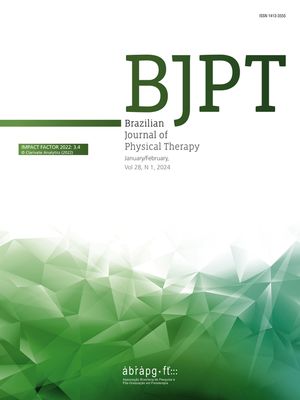
1st STUDENT SCIENTIFIC CONFERENCE OF THE BRAZILIAN ASSOCIATION FOR RESEARCH AND POSTGRADUATE IN PHYSIOTHERAPY (ABRAPG-FT)
More infoCerebral Palsy (CP) is a non-progressive neurological disorder resulting from brain injury that can occur prenatally, perinatally or postnatally; being the most common physical disability of childhood. Patients with CP may need assistance in Intensive Care Units (ICUs) at different stages during their development, due to the worsening of conditions with the presence of associated conditions, for example, convulsive syndrome and respiratory diseases, such as respiratory failure and pneumonia. Changes in tonus and posture, frequent in patients with CP, impair lung function, making respiratory conditions responsible for most ICU admissions and for the morbidity and mortality rate in this population.
ObjectivesVerify the association between the frequency of admissions in Intensive Care Units and age groups in patients with Cerebral Palsy through the Unified Health System (SUS).
MethodsThe study was developed based on data from the Ministry of Health's Hospital Information System on inpatient admissions by the SUS at the national level for the years 2015 to 2019. The patient's age and indication of ICU use were obtained. Ages were grouped into groups of age groups, according to the grouping used by the Brazilian census. Data were analyzed using the R software. A chi-square test of independence was applied, with standardized residuals adjusted and significance level correction. Cells with statistically significant differences were those that had adjusted standardized residues outside the adjusted limits.
ResultsThe chi-square test of independence showed that there is an association between age group and ICU use in patients with CP (X(17) = 5,083.8; p < 0.001; Cramér's V = 0.342). The analysis of the adjusted standardized residuals showed that there are more cases of ICU use in the age groups up to 14 years, especially up to 1 year of age; and fewer cases in the age groups between 15 and 49 years. The frequency of patients with CP who are aged up to 14 years and use the ICU is higher than the expected frequency, therefore indicating that there is an association between the two variables. In the age groups from 15 to 49 years old, the opposite happens, the frequency of patients using the ICU is lower than expected. In patients aged over 65 years, this frequency is again higher, but without statistical significance.
ConclusionsAge is a variable that is associated with a higher frequency of admissions to the intensive care unit of patients with CP, and the younger the age, the greater the number of admissions.
ImplicationsSince hospitalizations and clinical complications of patients with CP can be caused by multiple etiologies, in line with the variety of possible associated conditions, and that this factor complicates the process of diagnosing/monitoring them, the importance of health care of these patients is emphasized at early age, as well as the relevance of early diagnosis/intervention to prevent hospitalization and worsening of the condition.
Conflict of interest: The authors have no conflicts of interest to declare.
Acknowledgment: The authors wish to thank the Postgraduate Program in Rehabilitation Sciences at Faculty of Ceilândia (UnB), and CAPES, as the funding agency.
Ethics committee approval: Not reported.





